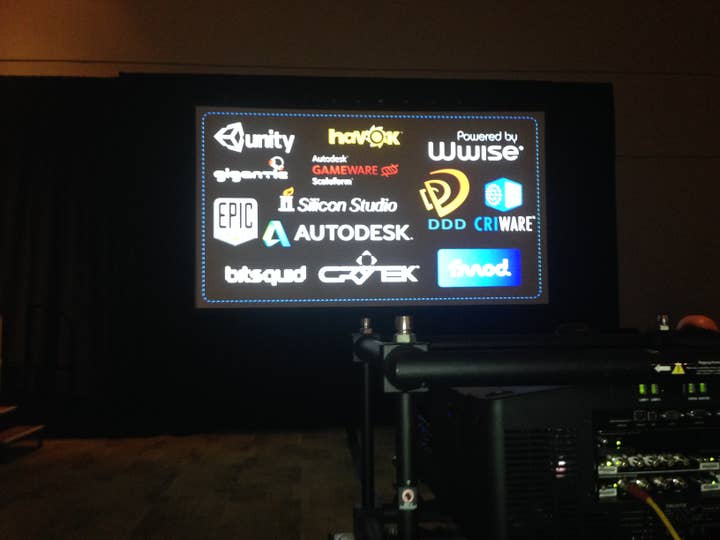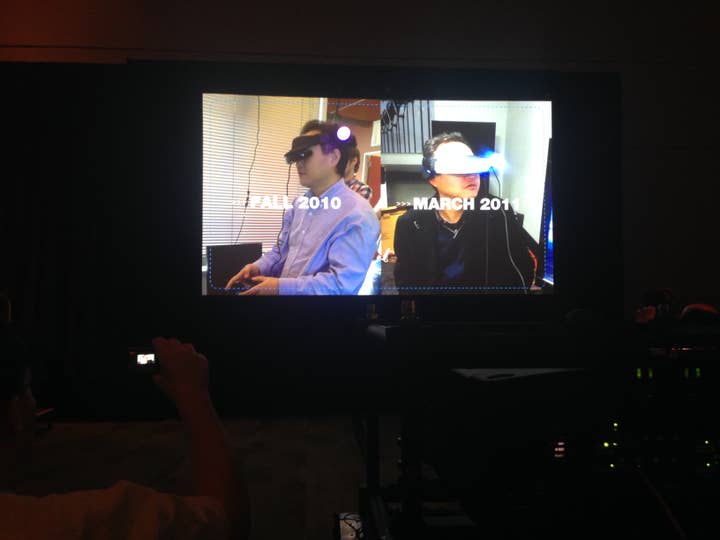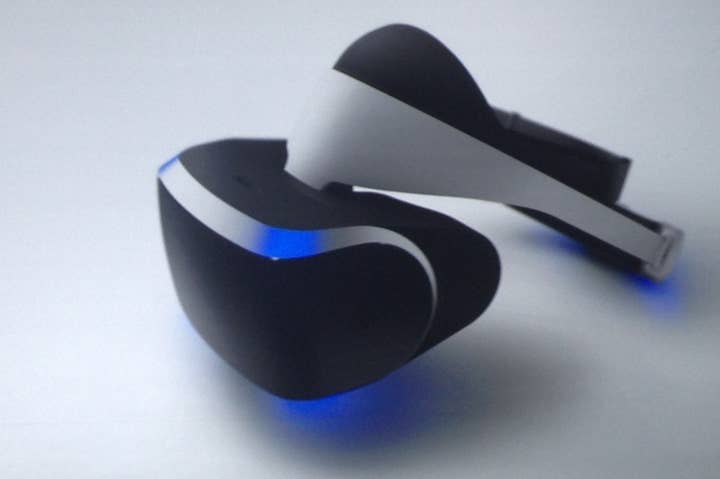Sony unveils Project Morpheus VR headset at GDC
Device to be demoed to attendees on Sony's booth at show
Sony has confirmed a long-standing rumour and thrown its hat into the VR headset ring, announcing the Project Morpheus at GDC this evening. The Morpheus will be integrate into the PlayStation ecosystem, connecting to the PS4.
Don't expect the headset to appear in the shops anytime soon, however - this is clearly a work in progress. Hardware is far from finalised, but the spec listed by Sony at this point is a 1080p, 90 degree display with 15 mm eye relief. Prototypes have 1000hz tracking with a three metre working volume, enabling 360 degree head movement. Forward prediction to help eliminate pipeline latency is also possible, but not recommended.
CCP's Eve spin-off Valkyrie will be demoed on the headset at Sony's booth, as will Square-Enix's Thief, a mediaeval demo called castle and a deep-sea diving simulator from Sony's London studio.
The Morpheus will be using PS Move technology rather than accelerometers to track head movements - with the PLayStation Eye camera required . By using that tech, Sony hopes to give its device an edge in accuracy over rivals.
The news came during session hosted by Shuhei Yoshida, assisted by Sony R&D gurus Richard Marks and Anton Mikhailov, entitled "Driving the Future of Innovation at Sony Computer Entertainment." Yoshida talked at length about Sony's passion for pushing the boundaries of play with technological innovation and new ideas. VR, he believes, will be the next disruptive force in that continuing evolution.

Slides were shown of prototypes of the device, using Move wands 'duct-taped' to existing headsets, followed by a short video of God of War being played with an early version of the hardware. A physical prototype of the Morpheus was then revealed on stage, and attendees were invited to visit the Sony booth in order to experience a demonstration during the show. GamesIndustry International will have a full report on the device as soon as possible.
The move puts the hardware giant into a market which is currently dominated by the Oculus Rift - a piece of hardware which has yet to be commercially released. By staking their own claim, Sony has established itself as a significant rival, with the rapidly burgeoning install base of the PS4 giving them a potentially enormous advantage, as well as a hefty USP for the platform.
Also, with first and third party studios on board to take advantage of the tech, Sony can expect a consistent flow of high-value games to populate the device's catalogue. Yoshida promised simple integration and fine-tuning based on the feedback from developers.
After Yoshida had revealed the device, Richard Marks took the stage to talk about its potential applications. Sony, he said has been working with partners as illustrious as NASA to perfect the feeling of 'presence' offered by Project Morpheus, explaining that he'd spent a day using visual data from the Curiosity Rover to simulate a first person experience of being on the surface of Mars.

Marks also intimated that the stereo-camera design of the new PlayStation Eye camera was built with VR firmly in mind. The Dualshock 4 and Move wand are also going to be tightly integrated to the overall system.
Much work is still left to be done, Marks admitted. The eventual aim is have an incredibly accessible device which can be plugged in and used immediately, as simply as putting on a pair of glasses. That process of feedback driven iterated development will rely heavily on the input of developers themselves, hence Sony's choice of GDC as the event to host the reveal.
Sony has form in wearable displays, with the company's HMZ-T3W using a twin OLED HD display to simulate a 700 inch cinema screen for the wearer, itself an evolution of a previous HMZ model.

